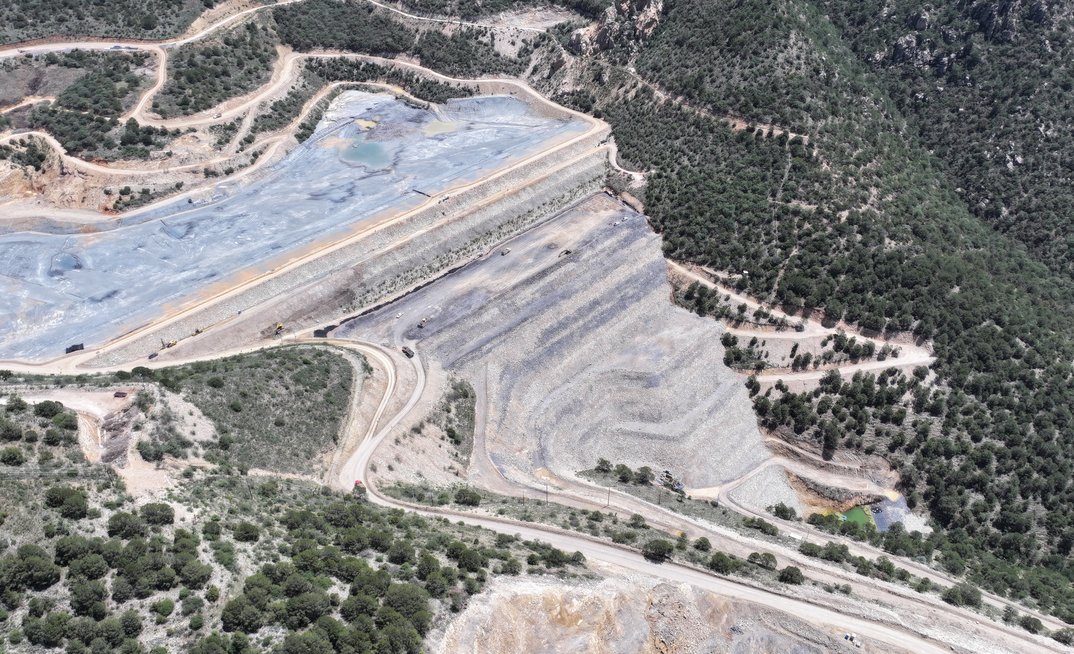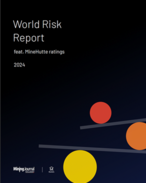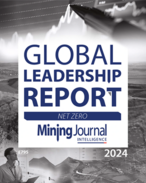SRK Consulting helps to design, construct, operate and close innovative tailings storage facilities to the highest international standards.
Copy and paste engineering is rejected by SRK in favour of bespoke solutions tailored to the specific setting and client requirements for the project in question.
‘Risk reduction' and ‘zero harm' are increasingly replacing ‘most cost-effective' and ‘simplest' as the key watchwords informing tailings management system solutions. Therefore, consultants like SRK are being called on by mining companies as never before, as the industry looks to navigate the transition to a more ESG-infused tailings landscape.
Communication is king
Before the introduction of the Global Industry Standard on Tailings Management (GISTM). tailings engineers and consultants would typically have dealt with the process superintendent or manager, whereas now, many mining companies - and most of the larger ones – have dedicated tailings practitioners on the payroll with the ability to identify specific tailings risks to a higher level. Moreover, with the GISTM having formalised roles and responsibilities, and introduced mechanisms for more efficient flows of information, there is now the ability to discuss directly with an accountable executive to express any concerns in a timely fashion.
Significant additional resources are being allocated to tailings management by the mining industry than was hitherto the case, while a more robust governance framework now prevails. These developments pay testament to a collective industry-wide determination to create the conditions and embed the working culture that will afford greatest scope for preventing more catastrophic tailings storage facility (TSF) failures, such as those witnessed at Mount Polley in 2014, Mariana in 2015 and Brumadinho in 2019.
Resources in demand
With the whole industry on the same mission, it is perhaps small wonder that qualified personnel to help deliver on the vision are currently severely stretched. One knock-on effect of this supply-demand disconnect is that those major mining companies with the deepest pockets, yet, in many cases, the lowest risk facilities , are bagging an outsized slice of the human resources pie. Meanwhile, those junior and mid-tier miners most in need of direction are often reluctant to follow suit, primarily due to the costs of accessing the expertise necessary to be GISTM-compliant.
With high profile dam collapses having impressed on mining companies that catastrophic failure represents a clear and present danger to their own facilities, they want definitive answers regarding the structural integrity or otherwise of the TSFs under their control, and they want them yesterday.
While establishing exactly what might trigger a failure is not straightforward and will vary on a case-by-case basis, investigations at the site, such as cone penetration testing (CPT), in conjunction with testing in the laboratory can establish how the materials in question could behave to estimate a factor of safety (FoS). If that FoS is deemed too low, remedial solutions can then be implemented; most commonly, the creation of a buttress, should adequate material and footprint be available.
Regarding new technologies and innovations, SRK's principal tailings engineer, Joe Rola welcomes anything that helps create the conditions for optimised tailings solutions. He emphasised, however, that access to large collections of monitoring data previously unavailable only has value if that data is being interpreted correctly to inform decision-making. Technology in and of itself does not make TSFs safer.
While pointing to client-centric collaboration as the hallmark of SRK's modus operandi, Rola also highlighted stakeholder engagement as a dynamic prevailing upon tailing management that has markedly increased in importance in recent years. So much so, it is having a significant impact on how, when and whether projects move forward.
For example, where previously a small increase to an agreed footprint with scope for big economies could be swiftly authorised, now even these minor changes necessitate renewed stakeholder consultation with no clear timeline to approval. Consequently, with time of the essence, a more constrained TSF remedial solution using ground improvement techniques may win through to ensure compliance with new protocols.
Digital twins
Senior civil engineering consultant at SRK, Darryl Godley has over a decade of expertise across the globe in open pit operations, geotechnical projects, and mine waste management, including tailings, waste dumps, reclamation, and closure.
In that time, he has seen tailings rise up the list of priorities for mining companies as confronting catastrophic TSF failures have acted to impact boardroom decision-making across the industry and led to an increase in resources being allocated to tailings management.
Godley pointed to digital twins as something that – while not a recent innovation – has only been applied to TSFs at scale in the last couple of years.
Centralising and presenting the vast array of pertinent real-time operational TSF data generated allows for easier visualisation and the ability to run various scenarios to better understand the facility and support improved, informed and timely decision-making.
TSFs are in a constant state of flux, yet the digital twin can be continuously updated to reflect this by onboarding changing sub-surface and geotechnical data, thereby giving an accurate snapshot of the facility at any given moment.
The application of digital twin technology is particularly important for the most at risk facilities, which are often to be found outside tier one jurisdictions where regulation is less strict, and where some TSFs come with little to no design documentation.
Godley referenced an example in Mexico where SRK was tasked with creating a digital twin of an upstream raised tailings dam facility built 30 years previously. In this case, CPT, geotechnical drillings, test pits, soil sampling, analysis of aerial photography and interviews with locals collectively allowed for re-creation of the facility in digital form. Without this, the deconstruction design for the client could not have been delivered with the same high degree of confidence.
GISTM a force for good
The GISTM is now ubiquitous across the tailings management space, and this omnipresence is helping to motivate the right decisions from mining companies according to Darryl Godley, since each is aware of the need to adhere to the standard and the risks of inertia. And, as the C-suite has come to recognise the consequences of continuing with ‘business as usual', more resources have been forthcoming to ensure investigative initiatives and remedial measures around at-risk TSFs can be adequately funded.
Godley would like to see more guidance around non-conventional tailings management, such as dewatered tailings, and anticipates that this may be forthcoming soon, as the GISTM's sphere of influence is expanded. For now, however, all at SRK Consulting and across the mining industry welcome the GISTM for its force for good credentials and for the greater clarity it provides regarding the nature and extent of obligations around TSFs.
ABOUT THIS COMPANY
SRK Consulting
SRK Consulting is an independent, international group providing specialised consultancy services. Among SRK's clients are many of the world's mining companies, exploration companies, financial institutions, EPCM and construction firms and government bodies.
OFFICE:
- SRK Consulting (UK) Limited, 5th Floor, Churchill House, 17 Churchill Way, Cardiff, CF10 2HH, Wales, UK
- Phone: +44 (0) 2920 348 150
- Fax: +44 (0) 2920 348 199
- Web: www.srk.com
- Email: info@srk.com



























